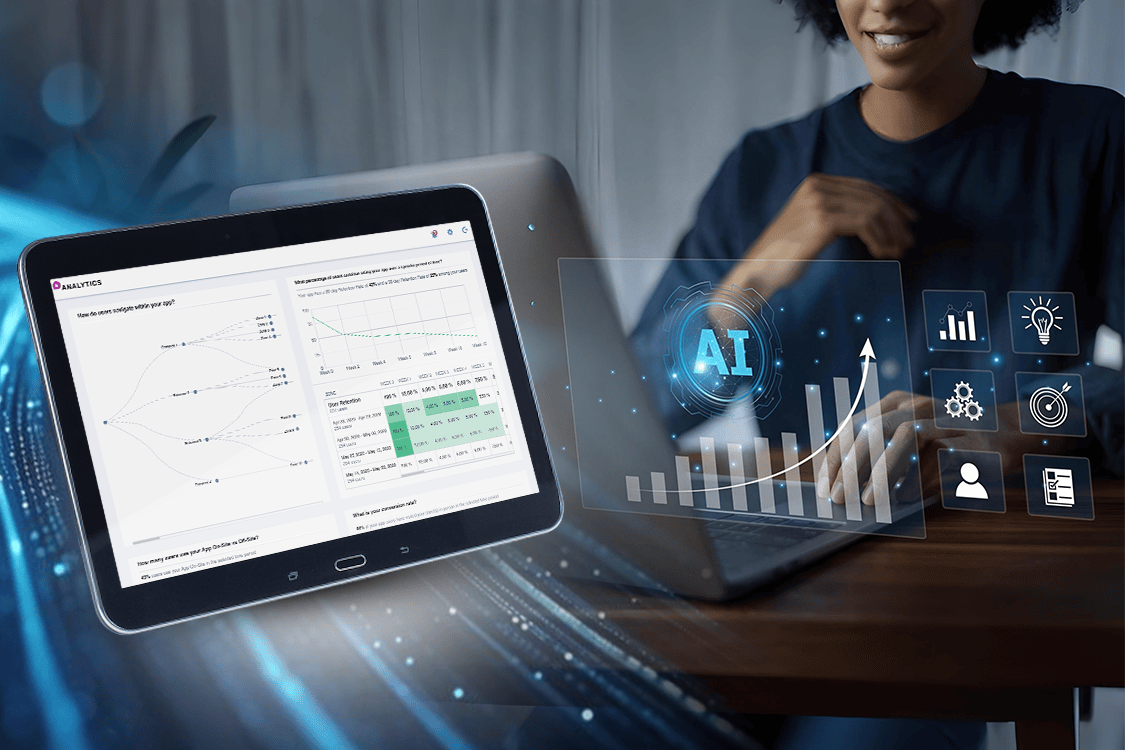Technology Trends

Managing a business is already a lot. Keeping up with customers, approvals, sales reports, inventory and onboarding—it never stops. Now imagine if some of that heavy lifting could run automatically behind the scenes. No extra hands, No extra stress, Just a system that moves work forward smartly. That’s the shift happening in 2025: How intelligent workflow automation is no longer a nice side project. It’s becoming the real engine powering businesses—big and small.
If you’re wondering how workflow automation is transforming businesses today and whether it’s time for you to jump in, here’s the full picture.
What is AI Workflow Automation?
Let’s keep it simple. AI workflow automation means using artificial intelligence to:
- Handle routine tasks
- Route information to the right person or system
- Make decisions based on data
- Learn over time to get better


It’s not old-school automation, where a human hardcodes, “If this happens, do that.” Intelligent workflow automation reads what’s happening, figures out patterns and acts without constant human instructions.
Think about it like a smart assistant that doesn’t just do what you tell it—but knows when something needs attention and fixes it before you even realize it. That’s the major difference between old task automation and what business workflow automation looks like today.
Why Businesses Are Moving Toward AI Workflow Automation
Here’s the simple truth: Manual work slows companies down.
- People get overloaded
- Errors creep in
- Customers have to wait
- Business opportunities slip by
And the worst part? Most of it is unnecessary. That’s why smart businesses are leaning hard into workflow automation and efficiency. It’s about building an engine that never gets tired.
In fact, 80% of executives say automation can be applied to any business decision. That shows just how much confidence leaders now have in letting AI drive critical processes—not just small tasks.
For example, Mapsted—a leader in location-based tech—uses automation to make indoor navigation seamless for malls and hospitals. Users find their way intuitively without realizing a smart system is working for them underneath. That’s the beauty of it: good automation feels invisible but powerful.
Benefits of AI Workflow Automation
When you hear people talk about the benefits of AI workflow automation, here’s what they actually mean in plain English:
1. Speed Without Sacrificing Accuracy
AI doesn’t get bogged down by Mondays or meetings. Automating workflows speeds up approvals, responses and orders—while cutting errors almost to zero.
For instance, onboarding a new client could move from a week of paperwork to an hour of smart forms and instant checks.
2. More Time for What Matters
Nobody loves updating spreadsheets or manually logging activities.
With business workflow automation, teams spend less time on low-value tasks and more on high-value work like strategy, creativity or customer care. Less burnout. More real output.
3. Real-Time Smarts
Instead of waiting for weekly reports, AI gives you real-time insights. Is inventory low? Approve restocking instantly.
Is the customer support ticket stuck? Auto-escalate it before the customer gets annoyed. Intelligent workflow automation doesn’t just automate; it adapts on the fly.
4. Better Decision-Making
When you have cleaner, faster data flowing through your systems, you make sharper decisions. Instead of guessing or gut-feeling your way through problems, AI gives you actionable, trustworthy insights every day.
5. Cost Savings Without the Pain
People sometimes worry that AI means cutting jobs. In reality, it means shifting people from grunt work to meaningful work—and saving costs that were leaking through mistakes, rework and slow operations.
It’s a smarter way to grow.
Applications of AI in Workflow Automation: Real-World Examples
Let’s make it real with examples. Here’s where applications of AI in workflow automation are hitting hardest:
Customer Support
- Chatbots answer 80% of customer queries instantly.
- AI routes tricky cases to the right human without delay.
- Sentiment analysis picks up angry customers and escalates them fast.
Sales and Marketing
- Lead qualification happens automatically based on customer behaviour.
- Personalized email campaigns go out based on real-time actions.
- Sales teams focus only on the hottest prospects, thanks to AI scoring.
Finance and Accounting
- Invoice processing automates itself with document recognition.
- Fraud detection flags weird transactions instantly.
- Budget forecasting improves with predictive analytics.
HR and Hiring
- AI pre-screens resumes and highlights the best matches.
- Interview scheduling auto-coordinates across calendars.
- Employee onboarding completes forms and training workflows automatically.
Healthcare
- Patient scheduling is adapted based on doctor availability.
- Claims processing for insurance moves faster and cleaner.
- AI helps detect potential diagnosis issues early through workflow triggers.
Retail
- Dynamic pricing adjusts based on real-time inventory and demand.
- Auto-restocking based on purchase patterns.
- AI-driven loyalty programs personalize offers automatically.
Even in real estate, tourism and manufacturing—the patterns are the same.
Smarter workflows = faster service, better outcomes, happier teams.
How to Implement AI Workflow Automation in Your Business (Step-by-Step)
Jumping into automation sounds big—but it doesn’t have to be overwhelming. Here’s a simple step-by-step:
1. Identify Repetitive, Manual Tasks
Where are your people spending hours every week on things a system could easily handle?
Look for:
- Form approvals
- Document reviews
- Ticket routing
- Data entry
- Standard email responses
2. Prioritize Impact
- Not all automations are created equal.
- Start where automation will free the most time or fix the most bottlenecks.
3. Choose the Right Platform
You don’t have to build from scratch.
Pick an AI workflow tool that’s user-friendly, integrates with your systems and offers strong support.
Look for:
- Low-code or no-code options
- Real-time analytics
- Easy integration with your apps
(And if you want a benchmark, Mapsted shows how even location systems use AI quietly to create seamless workflows.)
4. Start Small, Then Scale
- Pick one or two processes.
- Automate. Test. Improve.
- Then, move to the next ones.
- Scaling smart beats scaling fast.
5. Monitor, Learn, Adjust
- Automation isn’t “set it and forget it.”
- Watch your flows.
- Get team feedback.
- Tweak as you grow.
Common Challenges and How to Handle Them
It’s not all smooth sailing. Here’s where most businesses stumble—and how you want:
1. Data Quality
- AI can’t fix bad input.
- Clean your data, standardize formats and keep systems tidy.
2. Change Management
- People fear change.
- Communicate early, involve your team and show them how AI helps, not hurts.
3. Over-Automation
- Not everything needs automating.
- Focus on tasks where human touch isn’t needed.
- Customer relationships, creativity and leadership still belong to people.
The Future of Business: Why AI Workflow Automation Is Non-Negotiable Now
If your competitors automate and you don’t, you’ll move more slowly. Period. The businesses thriving in 2025 aren’t just big—they’re smart about using their resources wisely.
- They answer customers faster.
- They build products quickly.
- They spot problems before they happen.
- They let their teams focus on impact, not admin.
- AI workflow automation is not replacing people.
It’s giving people their time and energy back—and making the entire business sharper, faster and more fun to work in. In short, how intelligent workflow automation is transforming businesses comes down to this: It makes businesses work smarter, not harder.
Final Word
If you want a business that runs smoother, adapts faster and grows stronger—without burning out your people—you need to start seriously looking at AI workflow automation.
Business workflow automation isn’t just for tech giants anymore. It’s for anyone who’s tired of slow processes, manual errors and missed opportunities. The tools are ready. The benefits are clear. The companies already automating are moving ahead—while others are still stuck doing it the old way.
The real question is: When do you want to start making your business smarter? If you found this blog helpful, please read our blog on “Your 10-Step Plan to Boost Healthcare Efficiency with Location Technology and Workflow Automation” or watch our video on “Discover Mapsted’s IoT Division | Transform Your Operations Today” to learn more.
Frequently Asked Questions
Q1. What is AI workflow automation?
Ans. AI workflow automation means using smart systems to handle repetitive tasks, move data and even make some decisions without needing a person to step in every time.
Q2. How is AI workflow automation different from regular automation?
Ans. Regular automation follows fixed rules. AI automation, on the other hand, can learn patterns, adjust to new situations and handle more complex work without needing manual updates.
Q3. What are some examples of AI workflow automation in business?
Ans. Things like auto-approving expenses, smart chatbots answering customer questions, predictive maintenance in factories and real-time inventory updates are all examples of AI workflow automation.
Q4. Does AI workflow automation replace employees?
Ans. No, it doesn’t replace people. It frees them from boring, repetitive tasks so they can focus on more important, creative or high-value work.
Q5. How can a small business start with AI workflow automation?
Ans. Start small. Pick one or two repetitive tasks, use a simple automation tool, test it and scale from there. You don’t need a huge budget to see real results.
